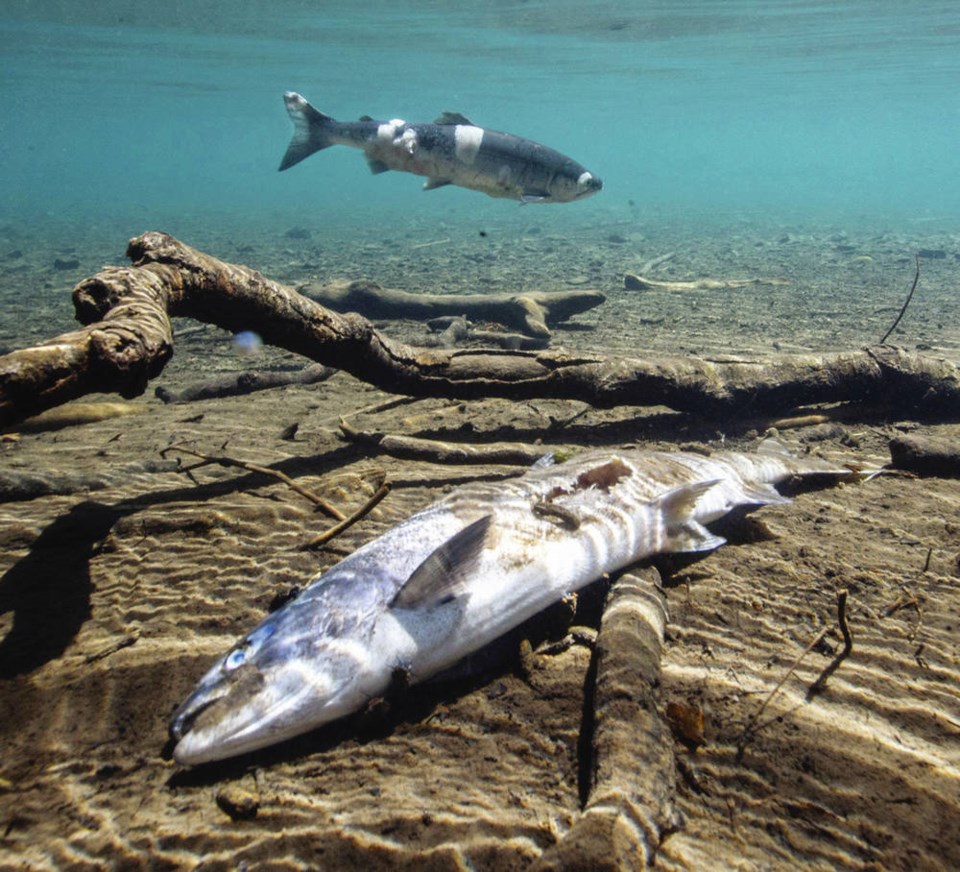A commentary by the vice-president for salmon, Pacific Salmon Foundation.
We’re not the only ones who need shade when temperatures soar. In times of extreme heat, it’s hard for fish. Climate change is one of the greatest threats facing Pacific salmon — a keystone species in B.C.
With higher temperatures, Pacific salmon habitat, notably the rivers and streams that flow throughout B.C., are warming and flow patterns are changing.
Excessively low flows during drought months leave salmon stranded and exposed to predators. Warming temperatures can change rainfall and snowmelt patterns, meaning more flooding and high dangerous waters that can be impassable for salmon.
Areas of B.C. are already reporting drought levels not typically seen until late July. In the Interior — where some of our most at-risk salmon stocks spawn and spend the first fragile year of life — it’s been one of the driest, warmest Junes on record.
Wildfires are burning and low water levels can be anticipated. These environmental conditions are very bad for salmon.
Water temperature is a key predictor of survivability for fish, and this is particularly true for salmon.
Science shows that waterways can heat up rapidly when temperatures soar and flows become low. When it’s hot, like us, fish burn more energy and it’s harder for them to survive.
The good news is that we can, and are, taking action to give Pacific salmon the best chance of adapting and surviving these changing conditions.
Through our Community Salmon Program, we’ve funded habitat restoration where community groups replant native vegetation that supports the riverbank and shades the stream.
For salmon, this is the difference between baking in 44-degree direct sunlight versus surviving in cool water, thanks to shade. This simple but necessary restoration work can protect two generations of salmon; juveniles and spawning adults.
Those who live along rivers and streams can actively support salmon conservation by leaving natural vegetation along the stream in its place, or replanting native species if it’s bare.
Work can’t stop there.
In our largest salmon nursery, the Fraser River, we’re undertaking research to identify migration impediments in the Fraser Canyon that can be rectified in the face of climate impacts — a critical step in helping our salmon recover is making sure they can make it back to their natal stream, giving salmon a chance to adapt.
Erosion along the watershed, flooding and increased water temperatures are a few of the significant impacts climate change has brought to bear on the Fraser.
In the Fraser Canyon, where we saw Canada’s highest-ever recorded temperatures last month, work is under way with the Matsqui and Yale First Nations to tag and track the precise locations where salmon are holding between Hope and Lillooet and determine areas of potential fish passage improvement.
When migration conditions are difficult, like the current high-water levels in the Fraser, being held up for a few days can make a difference between salmon successfully making it to their spawning grounds or dying en route. Identifying places that are holding salmon up on their spawning migration can improve the odds for tens of thousands of salmon.
As we look ahead, there are other efforts that should be explored related to salmon habitat and water management — preparing for hotter weather and drought-like conditions.
Our communities need to work together and include salmon in planning efforts related to water. Investments in improved irrigation planning and technology can help to save water and could be the difference between healthy salmon habitat and dried-out streams that spell the end of populations.
With optimized water-use systems, improved monitoring, co-ordinated withdrawal and nature-based solutions for water storage, our streams can remain healthy habitat for salmon to thrive. The Pacific Salmon Foundation is collaborating with partners to help to advance this.
Protecting headwater areas, small streams and natural cold-water sources is also vitally important as they contribute to stabilizing flows during low water periods, and help to moderate effects on water temperature. Salmon will often seek out these areas during extreme conditions, and even when they do not use these areas directly, the contribution of clean, cool water is often essential to their survival.
Research and restoration are key to adaptability. With solutions at our fingertips, and action across communities, we can make a huge difference in the face of climate change in giving salmon a fighting chance to survive.
- - -
To comment on this article, send a letter to the editor: [email protected]



